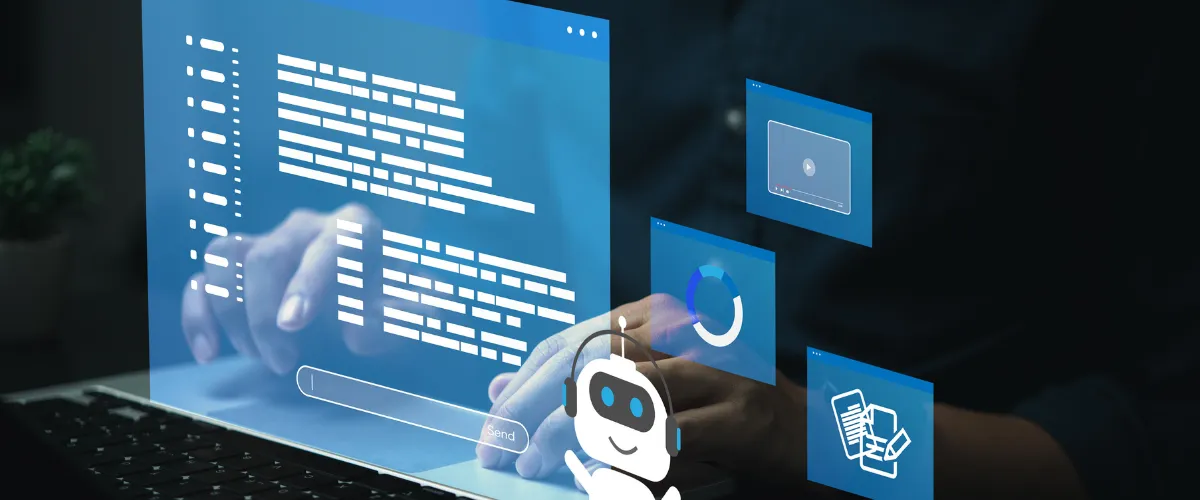
Introduction
In the ever-evolving world of graphic design, artificial intelligence (AI) has emerged as a powerful ally, transforming how we approach the creative process. While AI may seem like a tool of the future, its integration into design workflows is already reshaping industries, enhancing efficiencies, and allowing human creativity to shine brighter. This blog explores how AI can be used to inform design, leveraging its capabilities to drive innovation and efficiency.
Understanding AI in Graphic Design
AI-driven design refers to using artificial intelligence to guide and inform the design process. Unlike manual design, which relies solely on human experience and intuition, AI-driven design incorporates quantitative analysis, providing a blend of creativity and data-driven insights. This hybrid approach allows designers to create more effective and impactful designs.
AI in Action: Algorithm-Driven vs. Data-Driven Design
AI can influence design in two primary ways: algorithm-driven design and data-driven design.
Algorithm-Driven Design
Tools like DALL.E and CLIP use GTP-3 to generate designs automatically based on human input. These AI tools can create several design concepts within seconds, significantly shortening the design process. However, while these tools are impressive, they still require human oversight to ensure the final product aligns with the intended vision.
Data-Driven Design
In contrast, data-driven design uses AI to inform the manual design process. By analyzing design analytics, AI helps create the most effective design from the start. This approach reduces the need for extensive prototype testing, saving time and resources. AI-driven usability testing, for example, allows for thorough evaluation and adaptation before a design is released to the public.
The Creative Process Enhanced by AI
The creative process typically involves five key stages: Preparation, Incubation, Illumination, Evaluation, and Elaboration. AI can enhance each of these stages, streamlining workflows and augmenting human creativity.
Preparation
AI aids in the preparation stage by conducting extensive research and analysis. It can quickly analyze hundreds or even thousands of design variations, providing valuable insights that inform the initial stages of the creative process.
Incubation
During the incubation stage, AI-generated alternative designs can provide additional inspiration. By digesting the information gathered in the preparation phase, AI can help spark new ideas and directions for the project.
Illumination
AI tools like GPT-3 can accelerate the illumination stage by generating ideas and concepts rapidly. Speech-to-text capabilities, for instance, allow designers to verbalize their ideas and see them brought to life almost instantaneously.
Evaluation
In the evaluation stage, AI’s quantitative usability testing provides critical feedback. UX analysis reports generated by AI help designers understand user behavior, ensuring that the design will perform well in real-world scenarios.
Elaboration
Finally, during the elaboration stage, AI assists in refining and testing the design. Speech-to-text tools can expedite the creation process, while AI-driven insights ensure the final product meets all design and functionality criteria.
AI in Digital Marketing and Graphic Design
AI’s impact extends beyond graphic design into digital marketing, where it personalizes advertising, conducts market research, optimizes performance, and uses predictive analytics to enhance campaign effectiveness.
Personalized Advertising
AI analyzes audience data to tailor advertising messages and designs to individual users, increasing engagement and conversion rates.
Market Research
AI compares past and present customer data against key performance indicators, identifying the best audience to target for future advertisements.
Performance Optimization
AI monitors and optimizes marketing campaigns, generating recommendations for improvements and identifying issues that may have been overlooked.
Predictive Analytics
Tools like Dragonfly AI allow designers to assess the saliency and impact of their designs before testing them on real users, enabling conversion-driven design.
AI in Graphic Design Applications
AI is revolutionizing various aspects of graphic design, making it possible to create new designs quickly and efficiently with dynamic personalization.
Product and Packaging Design
AI is increasingly used in product and packaging design, especially when uniqueness is required.
Logo Design
AI-based tools can create unique logos based on user input. Advanced tools like Tailor Brands offer customization options to refine the design further.
Speech-to-Text
AI enables designers to bring ideas to life using speech-to-text technology, transforming verbal concepts into visual designs effortlessly.
AI in Website Design
AI is a valuable tool in website design, using predictive analytics to determine user attention patterns and identify potential distractions, ensuring a user-friendly and effective web design.
Empowering Your Creative Production Team with AI
AI is transforming the creative process by handling formulaic tasks and freeing up human designers to focus on creativity and innovation. When technology and humans work collaboratively, the design process becomes faster, smarter, and more efficient. Embrace AI as a support tool, not a replacement, and watch your creative production team thrive.
Conclusion
AI is here to stay, and its integration into the design process is revolutionizing the creative landscape. By leveraging AI to inform design, businesses can drive efficiencies, enhance creativity, and produce more effective and impactful designs. Embrace the power of AI in your creative workflow and unlock new possibilities for innovation and success.

